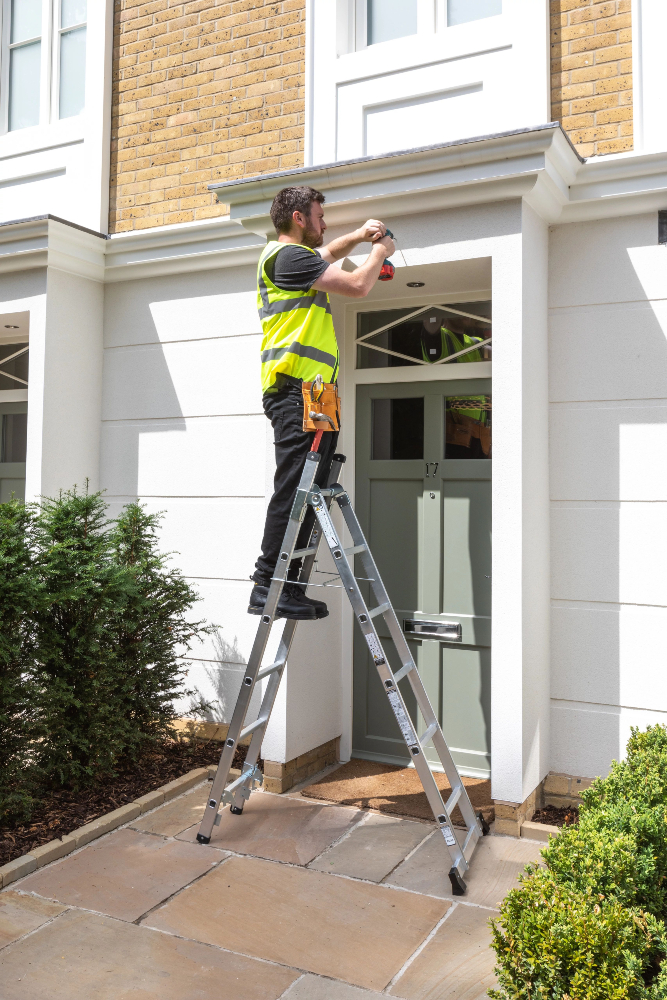Blog; Staying Safe in the Sun; Werner Issues Summer Working at Height Safety Guide

Written by:
Werner UK Sales and Distribution
. 11th July 2024

Take precautions
After months of seemingly constant rain, it’s no surprise that contractors nationwide are taking advantage of the warmer weather and longer days to put in overtime on site this summer.
But for those working at height, it’s vital that they consider extra precautions and prioritise health and safety as the mercury soars.
That’s why Werner, a leading ladder and access solutions provider, has put together a series of safety tips to ensure building professionals don’t end up with a summer to remember for all the wrong reasons.
Mark Robson, Product Manager at Werner, explains: “With the warmer weather finally here, there’s never been a better time for tradespeople to familiarise with the behaviours essential for maintaining optimum health and safety when working at height in the sun.
“By putting together this guide for tradespeople, we’re hoping to help take advantage of the better weather – without risking their health or livelihood in the process.”
Werner’s key considerations

Creating a solid foundation with equipment
Ensuring ladders have the correct classification is important, as poorly made imports are a leading cause of injuries when working at height. This would be EN131 Professional for trade, heavy duty and industrial usages, purchasing a ladder that is to the EN131 standard means that users can have peace of mind it’s been manufactured and tested to ensure maximum safety.
Undertaking risk assessments
As a manufacturer, Werner is keen to encourage the importance of working at height safely in all conditions and has a wealth of guides on its website to advise users of ladder and access equipment best practices.
When it comes to ladders the user must check the following for suitability and damage:
Should a user find any signs of wear and tear, loosening, bending or lack of stability they must inform their employer straight away and they should not attempt to use the equipment under any circumstances.
Staying safe in the heat
When focusing on getting the job done, it’s all too easy to forget to hydrate, which can cause dehydration and severe heatstroke. Alone, this is a huge risk to health. However, for those working at height a lack of hydration can mean danger is increased, due to the risk of falls if feeling drowsy, dizzy, or weak.
Drinking water at regular intervals helps to cool the body’s temperature and replaces the fluid that may be lost through sweating, reducing the risk of heat exhaustion, so it’s important to have fresh water readily available for all working on site.
Wear sunscreen
For those working outside and at height, sunscreen should be worn all year round. Even on cool or overcast days, harmful UV rays still penetrate cloud, and prolonged exposure to them can increase a person’s risk of developing skin cancer. The Health and Safety Executive found that construction workers are among the most ‘at risk’ of developing this form of cancer, so layering up with sunscreen is essential.
Wear suitable clothing
Using the PPE required to undertake a specific job is essential, so while it may be hot it is important not to make choices that will put safety at risk. However, there are types of clothing that can be worn to ensure maximum comfort when working at height in the heat.
Clothing made from natural fibres, like cotton and linen, are made from compounds that allow the skin to breathe. Darker colours like navy and black absorb more heat. In contrast, whites and beiges deflect the sun’s wavelengths making them the most suitable choice in extreme temperatures.
Guidance and further reading
For broader information on ladder safety, which includes guides on how to choose the correct ladder for the task at hand, how to correctly inspect equipment and for general working from height guidance…